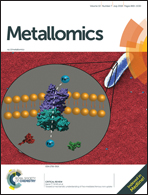Selenoprotein-U (SelU) knockdown triggers autophagy through PI3K–Akt–mTOR pathway inhibition in rooster Sertoli cells
Abstract
Selenium (Se) is a major component of male reproduction which exerts its effects via selenoproteins. Selenoprotein U (SelU), a newly identified protein, is expressed highly in eukaryotes and possesses a conserved motif similar to that existing in other thiol-dependent redox regulating selenoproteins; however its function is unknown. To investigate the role of SelU in testis autophagic and/or apoptosis cell death mechanisms, we established a Sertoli cell (SC) model isolated from 45 day old layer roosters. Small interfering RNA (siRNA) technology was used to develop SelU-knockdown (SelU-KD) and normal (N) SC models. Consequent to transfection, electron microscopy, qPCR, and western blot were performed. The results show that the mRNA and proteins of autophagy and anti-apoptosis genes increased while that of anti-autophagic mammalian target of rapamycin (mTOR) and pro-apoptosis genes decreased significantly in SelU-KD in contrast to N cells. Simultaneously, in contrast to N cells the expression of phosphoinositide-3-kinase (PI3K) and protein kinase B (PKB/Akt) both at the mRNA and protein levels decreased significantly in SelU-KD cells. In-addition, SelU depletion altered the expression of regulatory factors and increased the mRNA of TSC (tuberous sclerosis complex) genes as compared to N cells. Extensive autophagosome formation and lysosome degradation with an intact cytoskeleton were observed in SelU-KD cells. Our data indicate that SelU deprivation elicits autophagy and reduces the expression of important growth factors in SCs by disrupting the PI3K–Akt–mTOR signaling pathway. However SelU attenuation did not induce apoptosis in rooster SCs. Taken together, we conclude that SelU is essential for the survival and normal functioning of SCs.



 Please wait while we load your content...
Please wait while we load your content...